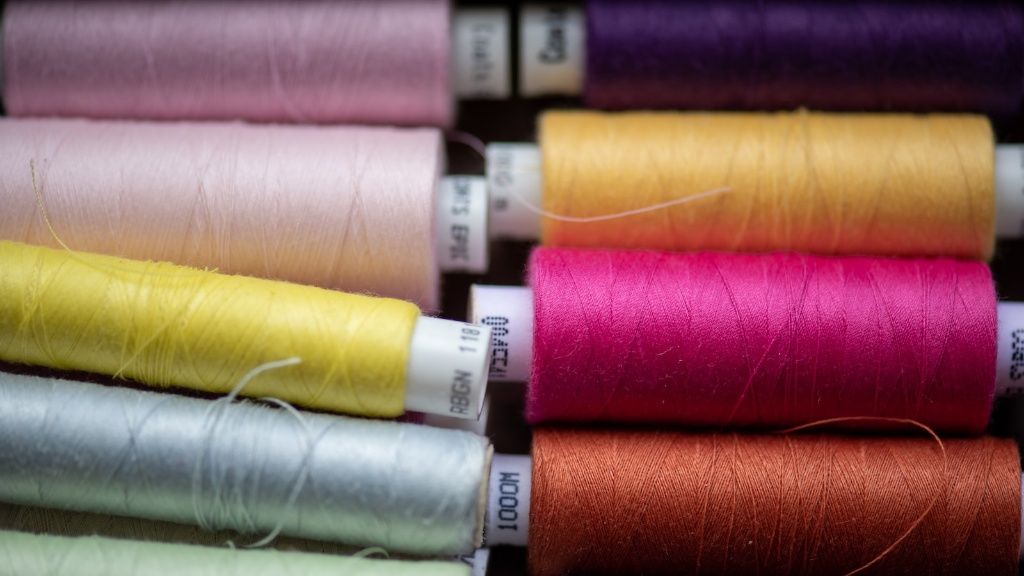Preparation
Changing a thread in a sewing machine is not a difficult task as long as the proper techniques are used. Before beginning, it is important to gather the necessary tools for the job including thread, threaders and scissors. The old thread should then be cut at the top and pulled out of the machine. It is also important to ensure that the bobbin is empty and that it can be removed without complication. The end of the new thread should also be threaded through the eye of the needle.
Re-Threading
Once the preparation is complete, the sewing machine can be re-threaded. The bobbin should be replaced into the machine and the thread should be passed through the thread guide, then the tension adjuster, before being pulled through the thread take-up lever. The thread should then be fed into the tension discs and finally through the needle. To complete the re-threading process, the end of the thread should be wrapped around the needle.
Checking the Thread
After the thread has been properly adjusted, the user should begin by checking the thread tension. This is done by placing a small piece of fabric underneath the presser foot and then pressing the hand-wheel to draw up the needle. The thread should be tightened slightly, but not so that it causes the fabric to bunch. Once the tension has been adjusted, the user can then begin to stitch.
Troubleshooting
If a stitching mistake is made, it is important to check the thread tension before making any further adjustments. If the tension is too loose, the stitches will be uneven, while if the tension is too tight, the fabric may bunch. If the tension is still not right after adjusting it, the sewing machine may need to be serviced by a professional.
Threading Tips
When threading a sewing machine, it is important to take the time to ensure that the thread is properly inserted. It is also recommended to use a threader to help insert the thread into the needle – this makes the entire process much easier and faster. Additionally, some machines have a special threader that eliminates the need for a separate tool.
Preventing Thread Issues
To prevent thread and other issues with a sewing machine, it is important to regularly clean the machine and check for any signs of damage. The user should also pay attention to the tension and make necessary adjustments to ensure that the fabric is properly secured. Additionally, it is important to use the proper thread for each specific project to ensure that the project is successful.
Using the Correct Thread
Using the right thread is an important aspect of working with a sewing machine. Not all threads are created equal, so it is important to choose the thread that is best suited for the project at hand. Some threads, such as spandex, are better suited for stretchy fabrics, whereas others, such as linen, are better for sturdy fabrics. By selecting the correct thread for each project, the user can ensure that the fabric is secured with the best possible finish.
Stabilizing the Fabric
Stabilizing the fabric is an essential step when working with a sewing machine. Stabilizing the fabric helps to keep the fabric from shifting and becoming distorted during the stitching process. This step can be done by using a stabilizer or a facing material such as interfacing or fusible webbing. It is important to use the correct stabilizer for each type of fabric as some may require a different type of stabilizer.
Threading Techniques
Threading techniques are a very important aspect of successfully changing the thread in a sewing machine. The user must become familiar with different techniques such as using a self-threading needle, using the two-thread method, or using a horizontal bobbin threader. By experimenting with different techniques, the user will be able to determine which method is best for their particular project.
Storing Thread Carefully
Thread should always be stored in a dry and cool area, away from direct sunlight or moisture. Storing thread in an airtight container is also recommended to prevent dust and lint from collecting on the thread. Additionally, the user should always purchase high-quality thread, as this will help to ensure that the projects are completed with maximum results.
Enjoying the Process
Making changes to a sewing machine can seem overwhelming for first-timers. However, by taking the time to learn and understand the different techniques and concepts, it is possible to make changes to the thread successfully and with ease. Taking the time to enjoy the process will also make the process more rewarding and enjoyable.


